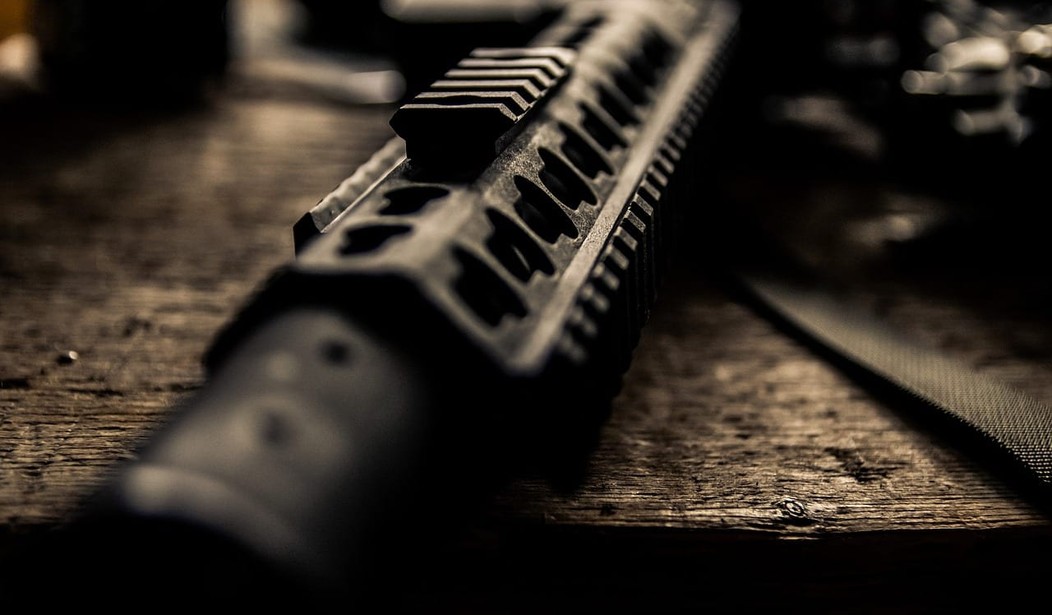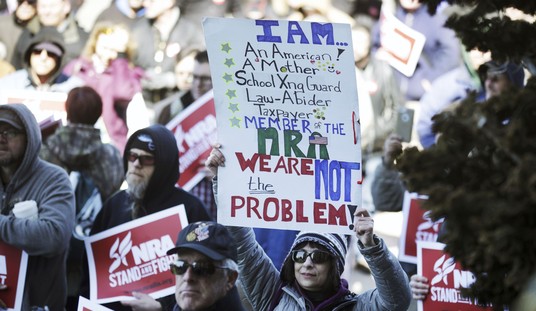Does the right to keep and bear arms include the right to possess and carry a machine gun? The text of the Second Amendment certainly doesn't say anything about the rate of fire, and the first laws banning automatic weapons were put in place in the 20th century, long after the Second Amendment was ratified.
In the Heller case, a majority of the Suprreme Court held that the Second Amendment only protects arms that are in common use, suggesting that laws forbidding possession of "M-16 rifles and the like" could be banned because they're both dangerous and "unusual", but in Bruen the Court explicitly stated that in order for a modern-day gun control law to be constitutional, it needs to fit within the "national tradition" of the right to keep and bear arms as it was understood in 1791 (and perhaps 1868 as well, which is when the Fourteenth Amendment was ratified).
Most courts around the country have adopted the position that machine guns are "dangerous and unusual" and therefore outside the scope of the Second Amendment, but a U.S. District Judge in Kansas has thrown out the federal charges of illegal possession of a machine gun after determining that full-auto firearms are "bearable arms" covered by the text of the Second Amendment. The judge also held that the Department of Justice "has failed to establish that this nation’s history of gun regulation" justifies the use of the federal law dealing with possession of non-registered machine guns, at least when it came to the defendant.
Tamori Morgan was charged with illegally possessing a firearm converted to full-auto through the use of an auto-sear, but his attorneys argued that he had a Second Amendment right to possess the gun, even though federal law prohibited him from doing so. U.S. District Judge John W. Broomes noted that Heller's language about "M-16s and the like" is merely dicta, and not a binding decision, and held that "the government’s interpretation would run directly counter to the essential analysis in Heller: just as the Fourth Amendment applies to modern 'searches,' the Second Amendment applies to arms that did not exist at the country’s founding."
So, machine guns are "bearable arms". But that alone doesn't mean they're protected by the Second Amendment. According to SCOTUS, if the DOJ could demonstrate that there are historical analogues to the current law, the prohibition could be upheld. Judge Broomes, however, says the DOJ has failed in its mission.
To meet its burden, the government advances only two potential historical analogs. First, the government points to English common law, which it asserts prohibited riding or going armed with dangerous or usual weapons. Second, the government cites one case from the North Carolina Supreme Court in 1824 that recognized an offense to arm oneself “with dangerous and unusual weapons, in such a manner as will naturally cause a terror to the people.” But both examples are disanalogous to what Defendant is charged with here—simple possession of a machinegun.
As Broome notes, both of those statutes required either an intent to "terrify" the citizenry or carrying arms in a manner that would cause terror among the public.
In contrast with the aforementioned historical examples, § 922(o) says nothing about the manner in which machineguns are carried or displayed. Instead, § 922(o) criminalizes the mere possession of such weapons without regard to how the possessor uses them. If an individual purchases such a weapon and locks it away in a gun safe in his basement for twenty years without touching it, he is just as guilty of a violation of § 922(o) as one who takes the same weapon out on the public streets and displays it in an aggressive manner. The statute requires no more than possession, and, more importantly in an as-applied challenge, the indictment in this case alleges nothing more.
Broome also took issue with the government's contention that machine guns are "unusual", pointing out that there are, according to the ATF, "more than 740,000 legally registered machineguns in the United States today.”
Machineguns have been in existence for well over a century. While the federal government has regulated transfer and possession of such weapons since passage of the National Firearms Act in1934, it did not outright prohibit possession of machineguns until passage of the Firearms Owners Protection Act in 1986. Even then, the law did not prohibit the possession of all machineguns; rather, § 922(o) merely prohibits possession of machineguns that were not lawfully possessed as of the date that prohibition went into effect in 1986. § 922(o)(2)(B). Thus, even today, it is perfectly legal for a person who has not been divested of his firearm rights under some other provision of law to acquire and possess a machinegun, so long as it was lawfully possessed by someone before the relevant date in 1986, and so long as he complies with the National Firearms Act’s requirements to obtain and possess the weapon. In that sense, machineguns are not unusual.
Broome's decision doesn't mean that the Hughes Amendment has been thrown out, or that the NFA is no longer in effect. This was an as-applied challenge, so Broome's ruling only applies to Morgan's case, and as 2A attorney Kostas Moras highlighted, Broome has left the door open for the DOJ to develop a stronger case (if it can) in the future.
Lots of excited responses, but everyone keep in mind that:
— Kostas Moros (@MorosKostas) August 22, 2024
A. This is a district court ruling and can be appealed; and
B. Even this court didnt rule out that another case could go differently if the government actually tries to put forward historical analogues.
Personally, I…
DOJ is almost guaranteed to appeal the Morgan decision to the Tenth Circuit, which will give it another shot to buttress their arguments with additional analogues... though whether or not they'll be close enough to satisfy the appellate court remains to be seen. Broome's ruling is solid and based on sound reasoning (and a fair application of the "text, history, and tradition" test as well), but as we've seen time and time again, the federal courts have upheld other restrictions on the right to keep and bear arms on spurious grounds, and that could easily happen with § 922(o) when the Tenth Circuit gets ahold of the case.









